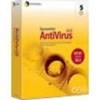Symantec 11281411 Administration Guide - Page 143
To con HSM settings, Table 3-10, Option, Description
 |
UPC - 037648327237
View all Symantec 11281411 manuals
Add to My Manuals
Save this manual to your list of manuals |
Page 143 highlights
Scanning for viruses and other threats 143 Configuring scan options Table 3-9 Storage migration options (Windows 2000 and later) Option Description Scan all files without forcing demigration (slow) Symantec AntiVirus copies a file from secondary storage to the local hard drive as a temp file for scanning, but the HSM application leaves the original file on the secondary storage. This method is slow and not supported by all HSM vendors. Because a file is copied from secondary storage to a disk for scanning, resource demand is high. Processor and network performance may further degrade as infected content is detected when a repair or deletion is returned to secondary storage. Scan all files recently touched without forcing demigration To reduce some of the resource demand issues with the Scan all files without forcing demigration option, this option lets you specify that only files that have been migrated recently and may still reside on faster secondary storage are scanned. It may be appropriate to scan files if they still reside on the faster secondary disk, and skip demigration and scanning if the files reside on the slow, long-term storage. For example, files may first be migrated to a remote disk after 30 days of no access. After 60 days of no access, the file is migrated to CD-ROM or remote SAN storage. In many cases, this method may still be slow because accessing files without forcing demigration is a relatively slow operation. Open files using backup semantics You can allow scanning of files that, for security reasons, are normally not readable except by a specific user. Table 3-10 lists the HSM scanning option for NetWare. Table 3-10 Storage migration option (NetWare) Option Description Scan NetWare compressed or NetWare compressed or migrated files are scanned. migrated files To configure HSM settings ◆ In the Scan Advanced Options dialog box, for the type of scan that you want to configure, select the appropriate options.















